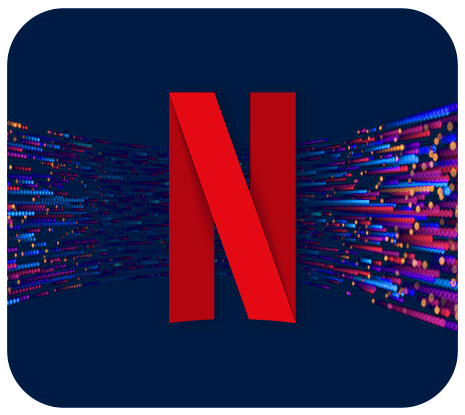
5 Ways Netflix Uses Data to Win the World of Streaming Entertainment
Netflix has become the undisputed king in streaming entertainment. The company has over 100 million customers (and more that still using their friends’ credentials…) and an astoundingly low 9% churn rate (by far the lowest of any streaming service). How did Netflix become the world’s leading entertainment hub and keep its customers happily watching their screens? The use, analysis, and implementation of big data, of course! Here are 5 ways Netflix uses data to win the world of streaming entertainment — and tips on how you can too.
Personalized Recommendations
Netflix utilizes data in a myriad of ways to better understand each and every viewer. They want to know what their customer wants and deliver it to them in the quickest and simplest way possible. They do this in many ways. Of course, they keep track of what movie or show a viewer watched, but that is only a small portion of the data they collect. They collect data on searches, the date and time a show/movie was watched, the device that was used to watch it (ie — whether it was on a computer, a TV, or a phone), and whether the show/movie was paused, skipped, or re-watched. Netflix also allows customers to rate what they watched.
Netflix takes all of this data and puts it through a complex algorithm that personalizes each and every customer’s viewing suggestions. This is massively important to Netflix’s business since 80% of the content streamed comes from one of their recommendations. Essentially, Netflix has utilized their data to ensure they have ‘repeat customers’
Trends
While Netflix uses personal data to personalize every customer’s suggestions, they also use their data on a macro level, figuring out what shows are trending. Netflix uses its Trending row at the top of its homepage to let its customers know what new programs to check out. This data also helps them make programming retention decisions, figuring out what programs to renew, and which programs to drop from their service. Netflix is able to quickly make business decisions with the confidence of real-time data, which can be appropriated into any business plan, no matter what the industry.
Original Content
Netflix has gone from a hub that streams the content of other companies, to an original content powerhouse, with shows such as Stranger Things, Fuller House, House of Cards, and Orange Is the New Black driving a huge percentage of their overall views. Their use of data helps drive what original projects to pursue and produce. The data they collect gives an extremely clear look into their audience, what they are looking for, and how much of it they want. As Zach Bulygo notes:
Traditional television networks don’t have these kinds of privileges in their broadcasting… Netflix has the advantage because being an internet company allows Netflix to know their customers well, not just have a “persona” or “idea” of what their average customer is like.
And not only does Netflix use data to help drive the greenlight process, they also use data on what users pause on, skip, and rewatch to drive their original storytelling. Netflix’s wealth of data gives them a competitive advantage over the more established players in their industry, and allows them to move boldly into new arenas with confidence.
Marketing
Netflix uses their data in their marketing as well. You may have noticed that the image of your favorite show changes from time to time. This is not by accident. Netflix uses data to choose the best image to use, and when to change it. For instance, for their original show, Gracie and Frankie, Nexflix’s “product team put up an image to promote the show to U.S. subscribers that only included Ms. Fonda’s co-star, Lily Tomlin. Tests showed that more users clicked on the show when the photo didn’t include Ms. Fonda.” This was eventually overturned due to Jane Fonda’s contract (as well as making sure their relationship with the show wasn’t damaged), but this example goes to show how Netflix uses data to inform their every decision.
Businesses can apply this lesson to their own efforts through A/B testing different kinds of content, imagery, and messaging to continually refine the customer experience.
Making Money
Netflix is a business first and foremost, and its use of data must also help them turn a profit. To say that they are succeeding is a vast understatement. Netflix’s algorithms save them a whopping “$1 billion a year in value from customer retention.” Their data also allows them to charge the value that gives their viewers the best value at a cost that is mutually beneficial for both the customer and the company. This revenue goes back into improving the content (and the data algorithms) that have made Netflix the king of streaming entertainment.
Whether it is by creating hyper-relevant content or building the tools for a can’t-miss marketing strategy, Lineate helps companies activate their data to ensure better audience understanding.
Share:
Got a project?
Harness the power of your data with the help of our tailored data-centric expertise.
Contact us